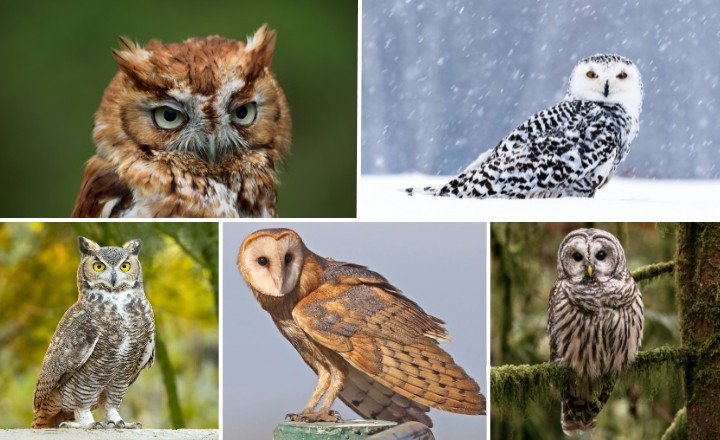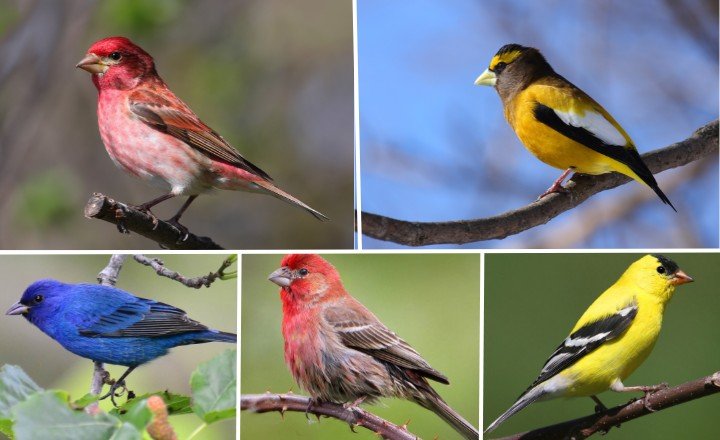5 Species of Owls in Massachusetts (With Pictures)
As a birdwatching enthusiast, I often find myself enchanted by owls’ silent grace and mysterious allure. Something is captivating about these nocturnal hunters, with their wide-eyed stares and feathered camouflage that blends seamlessly into the twilight woods of Massachusetts. The state is home to a diverse array of owl species, each with its unique calls and behaviors that beckon to be explored under the shimmering moonlight.
I’ve learned not just about their striking appearances but also about their vital roles in local ecosystems. Massachusetts’ rich mix of forests, wetlands, and open fields provides ideal hunting grounds. In this article, we will learn about some species of owls in Massachusetts.
Introduction of Owls
Owls are some of the most intriguing nocturnal predators, often shrouded in mystery with their enigmatic appearance and silent flight. These birds of prey exhibit remarkable size variations, ranging from the petite elf owl, which measures a mere 5 to 6 inches in height, to the imposing great horned owl that can reach up to 25 inches tall. Their striking features and diverse sizes allow them to inhabit various environments across the globe from dense forests and open grasslands to arid deserts and snowy tundras.

Owls also serve an essential ecological function by maintaining balanced populations within ecosystems. Despite being known mostly for their haunting calls that resound through night skies, like the White Birds, they also contribute significantly beyond mere symbolism each species uniquely adapting its lifestyle according to its habitat’s characteristics.
Types of Owls in Massachusetts
Just like you can find many owls in Georgia and Louisiana, Massachusetts is also home to a fascinating variety of owls, each with unique characteristics and behaviors that contribute to the rich tapestry of the state’s wildlife. Among these avian wonders, the Eastern Screech Owl stands out for its haunting call that pierces through the night air

These powerful raptors are not just impressive hunters; their adaptability allows them to thrive in diverse habitats, from suburban backyards to dense woods. Interestingly, their diet varies widely and can include animals as large as deer fawns or other medium-sized mammals an unsettling thought when one considers the delicate balance of local ecosystems, where even Black Birds can fall prey beneath their keen gaze.
Eastern Screech Owl
This is a fascinating resident of North America’s woodlands and showcases the captivating beauty and adaptability of Brown Birds. Ranging in color from a grayish hue to a rich reddish-brown, these small owls often blend seamlessly into their surroundings, thanks to their remarkable plumage and intricate facial patterns.

What makes them particularly intriguing is their wide array of vocalizations while many associate owls with a singular hoot, this bird employs a symphony of sounds for communication, including whinnies and trills that echo through the night.
Great Horned Owl
This is a fascinating raptor that captivates bird enthusiasts and casual observers alike, not only for its striking appearance but also for its remarkable adaptability. With their iconic tufted horns and piercing yellow eyes, these nocturnal hunters dominate their ecosystems. They possess an impressive array of hunting skills that enable them to thrive in diverse habitats, from dense forests to urban landscapes. Unlike many other birds of prey, the Great Horned Owl is known to be a skilled predator that can take down prey larger than itself, including Hawks and even deer fawns.

What sets the Great Horned Owl apart from its feathered counterparts is its ability to blend traditional hunting prowess with an extraordinary sense of hearing. Their ear placement allows them to triangulate sound with stunning precision, making it easier for them to detect small mammals rustling in the underbrush during nighttime hunts.
American Barn Owl
The American Barn Owl, with its heart-shaped facial disc and striking white underparts, embodies both beauty and mystery. This nocturnal predator possesses an extraordinary ability to hunt in complete darkness, relying on its acute hearing to locate prey hidden beneath the foliage. Unlike many other avian hunters that rely on vision, its unique ear placement allows it to pinpoint sounds with precision a skill that makes it a formidable hunter of small mammals like voles and mice.

Barn Owls are known for their varied vocalizations which can often be mistaken for eerie wails or screeches. These calls serve multiple purposes: they communicate territory boundaries among mates and warn off potential intruders
Barred Owl
It is a striking nocturnal predator and is easily recognized by its distinctive brown and white striped plumage. This medium-sized owl thrives in the dense woodlands of North America, favoring regions near water bodies where its primary diet of small mammals, birds, and amphibians is abundant.

Barred Owls exhibit remarkable adaptability; they’ve expanded their range significantly over recent decades into previously uninhabited habitats such as urban areas. This adaptability showcases their versatility in food sources and nesting sites.
Snowy Owl
The Snowy Owl, with its striking white plumage and piercing yellow eyes, embodies the stark beauty of Arctic landscapes. Unlike many raptors that depend solely on flight for hunting, these magnificent birds are equally adept at blending into their snowy surroundings. Their camouflage not only deceives potential prey, such as lemmings and voles but also helps them avoid predators in a harsh environment where survival is paramount. Interestingly, they exhibit fascinating adaptability; during food shortages, Snowy Owls have been observed traveling vast distances from their traditional habitats to find sustenance.

The breeding behavior of Snowy Owls offers insight into how environmental changes impact wildlife communities. These owls often undergo irruptive migrations post-breeding movements that aren’t strictly tied to seasonal patterns prompted by fluctuations in rodent populations due to climate variations.
‘Owls in Massachusetts’ Conclusion
Massachusetts is home to a diverse array of owl species, each contributing uniquely to the state’s ecosystems. These nocturnal hunters play crucial roles in maintaining balance within their habitats. As urbanization and habitat loss continue to threaten their populations, it becomes increasingly important for residents and conservationists alike to advocate for protective measures and preserve natural spaces. By engaging in local wildlife initiatives and fostering awareness about these fascinating birds, we can ensure that future generations will also have the opportunity to appreciate their beauty and significance.
FAQs
What Owls are Common in Massachusetts?
The Great Horned Owls, Eastern Screech Owls, Barred Owls, Long-eared Owls, and Short-eared Owls are the most common owls found in the state.
How Do You Attract Owls in Massachusetts?
Most of the owls are seeking hollow cavities. The Screech Owls are attracted to the manufactured boxes, place a box 10 – 12 feet on the tree and you can successfully attract an owl.
Where to See Owls in MA?
The Westport, New Bedford, Orleans, Nantucket, Duxbury Beach, Plum Island, and Salisbury State Park are some of the popular places where the owls are seen most often.







